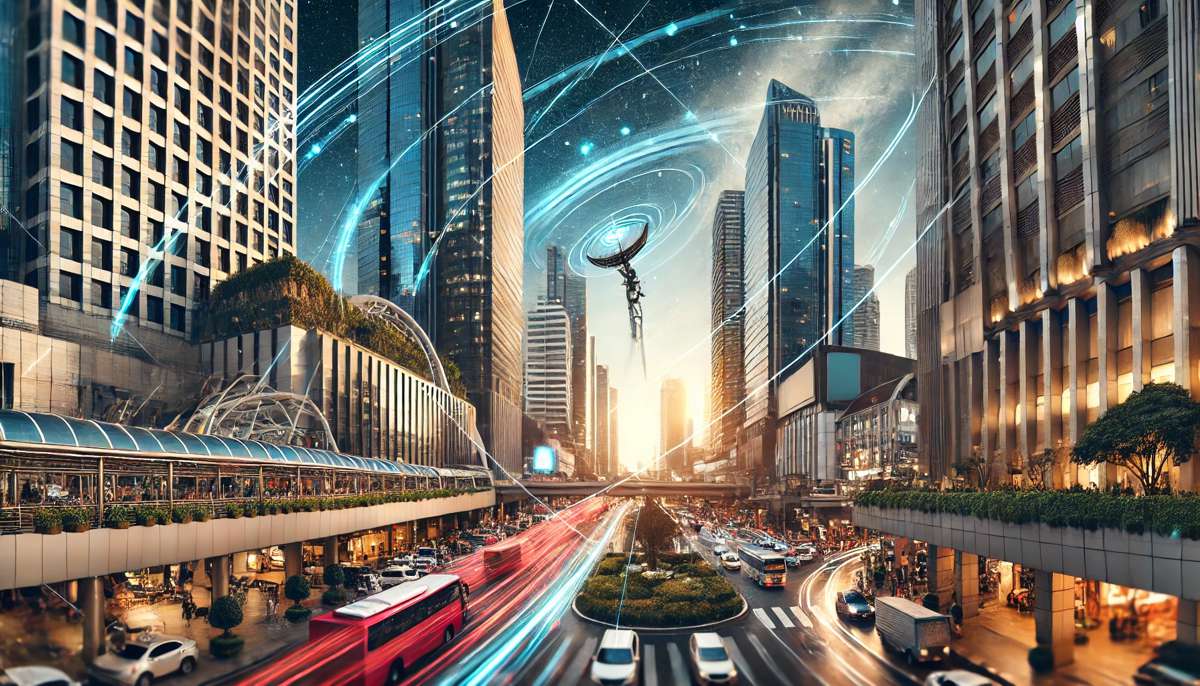AI is Revolutionising GNSS Error Detection in Urban Landscapes
Navigating a bustling city is no easy feat, and for Global Navigation Satellite Systems (GNSS), it’s even trickier.
Urban environments teem with skyscrapers, overpasses, and moving vehicles, creating signal blockages and reflections that confuse satellite positioning systems. Known as Non-Line-of-Sight (NLOS) errors, these issues lead to inaccurate navigation, a serious challenge for technologies like autonomous vehicles and smart city systems. However, a ground-breaking study published in Satellite Navigation is changing the game, offering a beacon of hope for GNSS accuracy in cities.
This research, spearheaded by experts from Wuhan University, Southeast University, and Baidu, unveils an Artificial Intelligence (AI)-powered solution that detects and mitigates NLOS errors in real time. By leveraging the Light Gradient Boosting Machine (LightGBM) model, the team has achieved unparalleled accuracy and efficiency in urban positioning systems.
The Urban GNSS Challenge
Urban areas, with their towering structures and narrow streets, are a nightmare for traditional GNSS systems. Signals bounce off buildings or fail to penetrate at all, resulting in erroneous data. For smart technologies—be it driverless cars, drones, or intelligent transportation networks—such inaccuracies can be catastrophic. A system that misjudges location by even a few metres could risk lives or disrupt city logistics.
The urgency to address these challenges has spurred significant research in GNSS error mitigation. Traditional methods, such as geometric models or signal strength thresholds, often fall short in complex cityscapes. Enter machine learning—a technology capable of recognising patterns and correlations that human-designed models might miss.
A Smarter Approach to GNSS Errors
The study’s revolutionary solution employs the LightGBM model, a machine learning technique specifically designed for speed and accuracy. Here’s how it works:
- Signal Classification Using Fisheye Cameras
To differentiate Line-of-Sight (LOS) signals from NLOS ones, researchers utilised fisheye cameras. By capturing a satellite’s visibility, the camera labelled GNSS signals for training the AI model.
- Feature Analysis
Several signal features were scrutinised, including:- Signal-to-noise ratio
- Satellite elevation angle
- Pseudorange consistency
- Phase consistency
By analysing these characteristics, the AI model identified clear patterns distinguishing LOS from NLOS signals.
- Superior Accuracy
The LightGBM model achieved an impressive 92% accuracy in dynamic, real-world urban tests conducted in Wuhan, China. Compared to older models like XGBoost, LightGBM proved not only more accurate but also faster, making it ideal for real-time applications.
A Leap Towards Smarter Cities
The practical applications of this research are staggering. Accurate GNSS data is the backbone of countless industries, and this breakthrough opens new doors for innovation:
- Autonomous Vehicles: Driverless cars rely on precise positioning to navigate safely. This AI-driven model significantly reduces the risk of accidents caused by GNSS errors.
- Drone Navigation: Drones delivering packages or surveying infrastructure benefit immensely from improved location data, especially in cluttered urban environments.
- Urban Planning: Smart cities depend on reliable GNSS for traffic management, emergency response, and infrastructure monitoring.
Dr. Xiaohong Zhang, the lead researcher, remarked: “This method represents a major leap forward in enhancing GNSS positioning in urban environments. By using machine learning to analyse multiple signal features, we’ve shown that excluding NLOS signals can significantly boost the accuracy and reliability of satellite-based navigation systems. This has profound implications for applications such as autonomous driving and smart city infrastructure.”
Funding the Future of Navigation
This study was supported by multiple prestigious organisations, including:
- The National Science Fund for Distinguished Young Scholars of China
- The National Natural Science Foundation of China
- The Hubei Province Major Program (JD)
- The Special Fund of Hubei Luojia Laboratory
- The Wuhan University-Baidu Map Beidou Cooperative High-Precision Positioning Technology Joint Laboratory
Their investment underscores the critical importance of developing robust GNSS solutions for urban landscapes.
A New Era for GNSS in Urban Jungles
As cities grow smarter and more connected, the importance of reliable navigation cannot be overstated. This innovative AI approach promises not only to make GNSS more accurate but also to redefine urban mobility. From reducing traffic congestion to ensuring safer autonomous transport, the potential is limitless.
The LightGBM model stands as a testament to the transformative power of AI, bridging the gap between theoretical research and practical solutions. With this breakthrough, the dream of seamless, smart navigation in urban settings moves closer to reality—one step at a time.




















